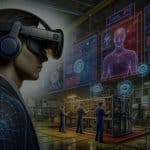In the era of smart technology, gym enthusiasts are constantly on the lookout for ways to improve their exercise regimes and maximize their health benefits. With access to a plethora of data from wearable devices and fitness systems, users can now monitor their health and fitness levels with unprecedented accuracy and convenience. In this article, we will guide you on how to design a high-tech fitness room equipped with advanced biometric monitoring.
Incorporating Smart Devices into Your Fitness Room
When you think of a high-tech fitness room, the first things that may come to mind are advanced gym equipment and state-of-the-art facilities. However, the key to a truly modern fitness room lies in integrating smart devices into your exercise routine.
This might interest you : What’s the Best Method for Installing an Eco-Friendly Greywater System in a Suburban Home?
Smart devices are the backbone of modern fitness technology. They provide users with a detailed analysis of their health and fitness data, helping them keep a close eye on their progress and make informed decisions about their training. For a gym to provide this level of user access, integrating smart devices like smartwatches, fitness trackers, and heart rate monitors is crucial.
While the market is flooded with a variety of smart devices, it’s important to choose the ones that best suit your gym’s needs. For instance, smartwatches and fitness trackers are essential for monitoring heart rate, calories burned, steps taken, and even sleep patterns. On the other hand, smart scales and body analyzers can provide detailed data about a user’s body composition, including body fat percentage, muscle mass, and water content.
In parallel : What Are the Most Effective Space-Heating Solutions for a Loft Conversion?
Advanced Biometric Monitoring Systems
Biometric monitoring systems have revolutionized the way we approach fitness and health. By providing real-time, accurate, and personalized data on a user’s physiological functions, these systems take fitness tracking to a whole new level.
At the heart of advanced biometric monitoring systems are wearable devices equipped with sensors that gather data on various health parameters such as heart rate, blood pressure, body temperature, and even blood oxygen levels. These devices use this data to give users a comprehensive understanding of their body’s responses to different training routines.
Incorporating an advanced biometric monitoring system in your gym can help users fine-tune their workouts based on their unique physiological responses. Some commercial biometric monitoring systems can also integrate with other gym equipment, creating a seamless and interconnected fitness ecosystem.
Using Data to Personalize Workout Routines
In a high-tech fitness room, data is king. The wealth of information that smart devices and biometric monitoring systems provide can be used to create personalized workout routines that cater to individual fitness goals and health conditions.
For example, heart rate data can be used to determine optimal workout intensity levels, while body composition data can help tailor workouts to focus on fat loss or muscle gain. Additionally, sleep and recovery data can be used to schedule rest periods and prevent over-training.
The key here is to make this data easily accessible to users. This could be achieved through a dedicated gym app or dashboard that allows users to view their data, track their progress, and modify their workout plans accordingly.
Integrating Technology with Traditional Gym Equipment
The integration of technology does not stop at wearable devices and monitoring systems. Even traditional gym equipment has evolved to incorporate smart features that enhance the user’s exercise experience.
For instance, many modern treadmills, stationary bikes, and elliptical machines come with built-in touchscreens that can display a user’s biometric data in real-time. Some of these machines can automatically adjust their resistance or incline based on a user’s heart rate, essentially providing a personalized and dynamic workout experience.
Moreover, virtual reality (VR) technology is also making its way into the gym. VR-based workout systems can create immersive and interactive workout environments that are more engaging and enjoyable than traditional workouts. For instance, a user could take a virtual bike ride through scenic landscapes, climb a virtual mountain, or even participate in a virtual boxing match.
As technology continues to advance, so does the potential for fitness. By integrating smart devices, advanced biometric monitoring systems, and data-driven workout routines along with traditional gym equipment, you can create a high-tech fitness room that takes user experience and health benefits to the next level.
Advanced Access Control and Real-Time Health Monitoring
Access control has become an essential aspect of modern gym management. It refers to the system that controls who can enter the gym and use the equipment. Advanced access control systems can include biometric identification methods such as fingerprint scanning or facial recognition. This not only improves security but can also be used to track individual users’ workouts, gym usage patterns, and even automatically sync their personal performance data with gym equipment.
Utilizing real-time health monitoring using wearable technology is another great way to augment the user experience in a high-tech fitness room. Wearable devices outfitted with biometric sensors, such as smartwatches and fitness trackers, can monitor a user’s heart rate, calories burned, steps taken, and even sleep quality. This real-time data can be synced with gym equipment or fitness apps to provide a custom-tailored workout experience.
Incorporating artificial intelligence (AI) can take biometric data interpretation and real-time health monitoring to new heights. AI can analyze vast amounts of data, helping users understand their long-term health and fitness trends. It can also suggest personalized workout plans and dietary recommendations based on the user’s unique biometric data and fitness goals.
Augmented and Virtual Reality for Immersive Workouts
Augmented reality (AR) and virtual reality (VR) technologies are seeing increasing applications in the fitness industry. They can create immersive and interactive workout environments that significantly enhance the user’s physical activity experience.
In a high-tech fitness room, VR could be used on treadmills or stationary bikes, allowing users to jog through a forest, cycle along a beach, or even sprint across a desert, all within the confines of their gym. This makes workouts more engaging and enjoyable, potentially improving adherence to exercise routines.
On the other hand, AR can enhance personal training sessions by overlaying useful information on top of the real-world view. For example, users could see arrows guiding their movement for specific exercises or visualize their form in real-time, all of which can help improve exercise technique and prevent injuries.
AR and VR technologies can also facilitate competitive and cooperative workouts. Users can engage in virtual races with gym buddies or participate in global challenges, all of which add a motivational factor to their workout routine.
Conclusion
Designing a high-tech fitness room requires a comprehensive understanding of modern technology and a keen insight into the evolving needs of gym-goers. The integration of smart devices, advanced biometric monitoring systems, data analytics, AI, and VR/AR technologies can revolutionize the user experience, offering personalized, engaging, and effective workouts.
The impact of these technologies goes beyond the gym. They can encourage a long-term commitment to health and wellness, empower users with detailed knowledge about their health, and foster a sense of community through virtual competitions and cooperative workouts.
With the pace of advances in technology, it’s exciting to envision what the future holds for fitness. Whether it’s more sophisticated wearable devices, breakthroughs in AI-guided workouts, or even more immersive VR/AR experiences, one thing is clear: technology will continue to redefine the way we exercise and approach our health.











